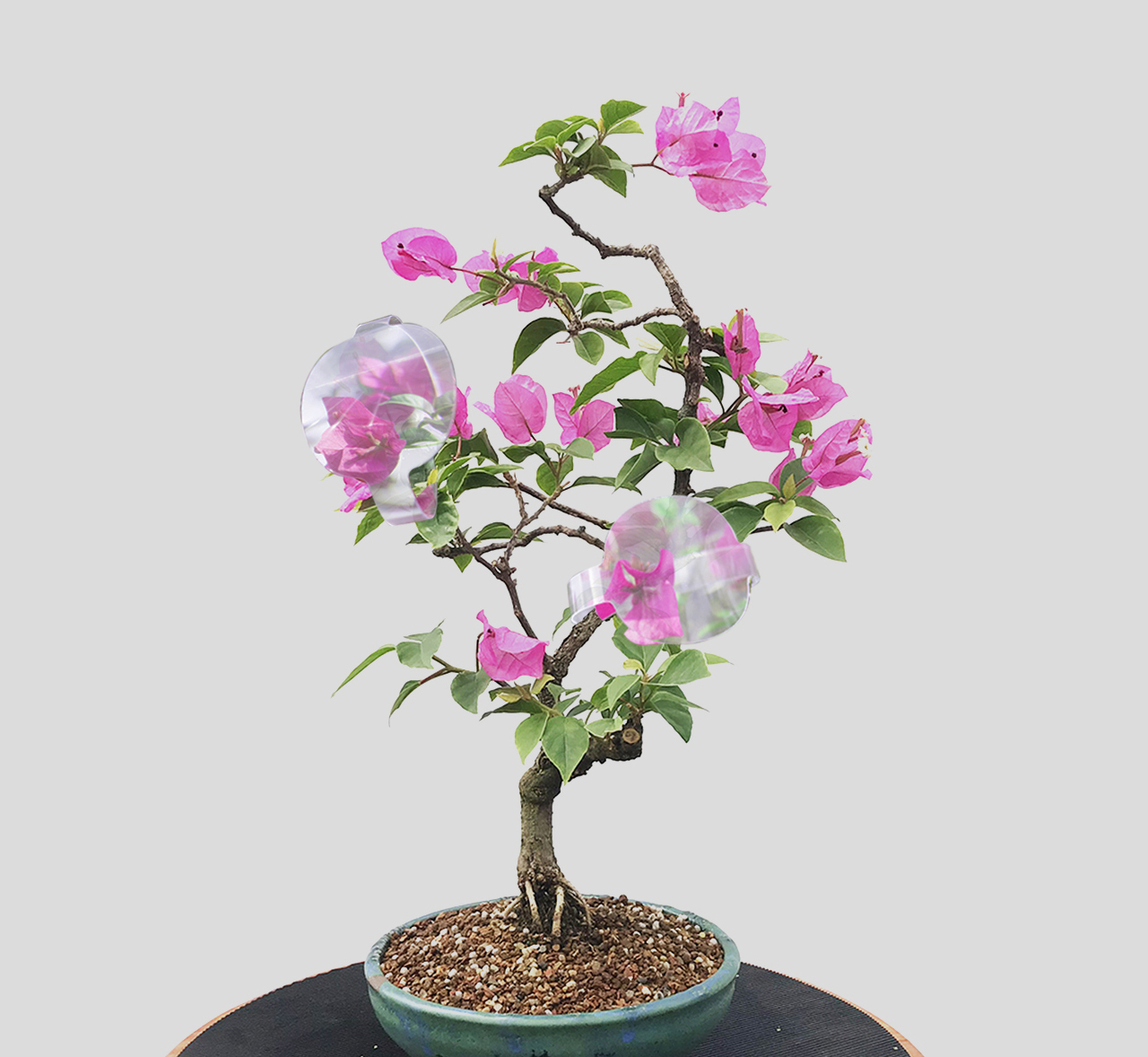
B for Bougainvillea
Design probes celebrating the unofficial flower of Singapore
Singapore’s Garden City Project, an initiative introduced by Lee Kuan Yew to beautify the landscape of Singapore in the 1960s, has grown to become a strong identity to Singapore and Singaporeans.
The bougainvillea epitomises the initiative: found along sidewalks and overhead bridges, this “community flower” has grown to become embedded with the Singaporean identity.
Through the project, we aim to propose a series of artefacts presenting new ways to “see” the bougainvillea plant beyond our everyday perception.
Why bougainvillea?
The bougainvillea is an embodiment of the deep-rooted relationship that we have with the natural landscape of our garden city.
![]() Image credit: Nguan
Image credit: Nguan
Celebrating the “unofficial national flower”
The bougainvillea plays an iconic and familiar role in shaping Singapore’s modern landscape, but we felt that it was never fully celebrated as a piece of design heritage.
Design probes
1. How can we encourage a curious inquiry into the bougainvillea flower?
Observation:
![]()
Intervention:A “lens attachment” that gives us a closer look and understanding of the bougainvillea flower.
![]()
![]()
![]()
Observation:
![]()
Intervention:A vase that captures the emotive yet fleeting moment of bougainvillea flowers dropping.
![]()
![]()
![]()
Observation:
![]()
Intervention:An artificial bougainvillea that distills our memory of the plant through color, made from the pigment of fallen bougainvillea flowers.
![]()
![]()
![]()
![]()
![]()
The bougainvillea is an embodiment of the deep-rooted relationship that we have with the natural landscape of our garden city.
However, it often bears a reputation of being a "roadside plant" among Singaporeans due to its common occurrence at roadside greenery and overhead pedestrian bridges.

Celebrating the “unofficial national flower”
The bougainvillea plays an iconic and familiar role in shaping Singapore’s modern landscape, but we felt that it was never fully celebrated as a piece of design heritage.
Through a series of exploratory design probes, we aimed to inspire people to appreciate the flower in newfound ways. It was time to give the unofficial national flower the recognition she deserves.
With the initial vision of the project culminating in an exhibition, we had also hoped for creatives and members of the general public to contribute their own ideas of celebrating the plant.
Design probes
1. How can we encourage a curious inquiry into the bougainvillea flower?
Observation:
The bright purple bougainvillea petals are commonly perceived by many as its flower, yet the true flower in fact resides deeper within - as thin floral stalks which are usually white or yellow in colour.

Intervention:
A “lens attachment” that gives us a closer look and understanding of the bougainvillea flower.
Through carefully-cut openings on the surface of the material, the flexible magnifying sheet can securely hook itself onto the stalk of the plant.



2. How might we elevate this “community flower” — from the roadside to a gallery piece for the home?
Observation:
Phenomenon of fallen bougainvillea flowers, which are a common sight scattered across pavements and overhead bridges.

Intervention:
A vase that captures the emotive yet fleeting moment of bougainvillea flowers dropping.
With a simple cap structure, the vase captures the fall of the bougainvillea in the convenience of the home.
Through SLS 3D printing, a unique grain pattern is also revealed akin to dry gardens
—
an appropriate backdrop to the flower petals.



3. We identify the bougainvillea most through its iconic colors. Can we encapsulate and capture this attribute through a physical object?
Observation:
Our streets are washed with vibrant colors whenever it is bloom season for the bougainvillea, and people can easily recognize the plant by its signature colors — ranging from purple, magenta, red to orange.

Intervention:
An artificial bougainvillea that distills our memory of the plant through color, made from the pigment of fallen bougainvillea flowers.
Through usage of a porous 3D-printed material, the “flower” soaks up the dye, slowly growing over time via capillary action.
Different bougainvillea strains uncover the potential to create a variation of dye colours.
We have also extracted dyes extracted from fallen bougainvillea petals. The dye can also be used for other applications — imagine making bougainvillea colored papers, natural dyeing of fabrics — the possibilities are endless.





Year
2020
Team
Jon Chan Hao, Jasmine Quek
2020
Team
Jon Chan Hao, Jasmine Quek